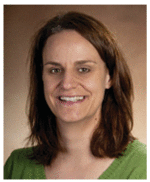Abstract
Research indicates that pregaming (drinking before a social event) and tailgating (drinking before a sporting event) are two culturally ingrained alcohol use behaviors by college students. We examined the prevalence of these two activities in a sample of college students (N = 354) who violated campus alcohol policy and were mandated to receive an alcohol intervention in fall 2010. Results indicated that alcohol consumption and other risk factors were related to pregaming and tailgating. These findings are discussed in the context of clinical implications and future directions for research. This study was funded in part by the National Institutes of Health.
Keywords: pregaming, tailgating, alcohol use, college student drinking, social norms, descriptive norms, alcohol beliefs
College students are a high-risk population for alcohol misuse (U.S. Department of Health and Human Services, 2012). Tailgating (TG) and pregaming (PG) are prevalent in college and associated with increased levels of alcohol use and associated harms (e.g., Borsari et al., 2007a; Shook & Hiestand, 2011; Zamboanga, Schwartz, Ham, Borsari, & Van Tyne, 2010). There are both similarities and differences between TG and PG (e.g., drinking before another event with different contexts), making the two culturally accepted activities difficult to differentiate. To date, alcohol use during PG and TG has not been directly compared.
Drinking behaviors are influenced by beliefs that are formed from social interactions and observations (e.g., Simons-Morton, McLeroy, & Wendel, 2012). For example, beliefs about the role of drinking in college, in addition to drinking behaviors themselves, are significantly related to personal alcohol use (e.g., Osberg et al., 2010; Osberg, Billingsley, Eggert, & Insana, 2012). Perceptions about how much others drink, commonly referred to as alcohol drinking norms, have been consistently related to one's actual alcohol use (e.g., Borsari, Murphy, & Barnett, 2007). Research indicates that descriptive norms are strong predictors of alcohol use during a PG (e.g., DeJong, DeRicco, & Schneider, 2010; Pedersen & Labrie, 2008), yet little is known about descriptive norms and TG. One study found that TG-specific drinking norms was positively related to alcohol use and alcohol-related consequences experienced while TG (Neighbors, Oster-Aaland, Bergstrom, & Lewis, 2006), but it remains unclear whether general (versus context-specific) alcohol beliefs exert similar influences of alcohol use at both PG and TG events.
The purpose of this study was to investigate characteristics associated with PG and TG in a sample of college students who were mandated to receive an intervention following an alcohol-related incident. This research is novel because alcohol use patterns and alcohol-related beliefs associated with TG and PG have not been directly compared.
METHOD
Setting and Recruitment
This study took place at a four-year, state university. Data were collected from two research studies evaluating a mandatory alcohol intervention following an alcohol policy violation in the fall 2010 semester. The first study (N = 278) started recruitment on September 15, 2010 and ended on November 19, 2010. Recruitment for second study (N = 76) started recruitment immediately after the first study and ended on December 12, 2010. Combining these two studies provided a unique opportunity to investigate PG and TG during the course of the football season where TG is prevalent in college (e.g., Neal & Fromme, 2007). All students who violated campus alcohol policy, received medical attention for alcohol-related issues, or were arrested by police on campus or in the surrounding community were referred to the campus health center and recruited to participate in the parent studies (Hustad et al., 2014).
Participants
Students (N = 714) were eligible to participate if their score on the Alcohol Use Disorders Identification Test (AUDIT; Bradley, McDonell, Kivlahan, Diehr, & Fihn, 1998) was less than 16 (i.e., students with low to medium alcohol misuse, they did not endorse suicidal ideation, and they were an undergraduate student). Out of the 611 eligible students, 354 students (58%) consented to participate. Participants were 65% male, 86% Caucasian, 50% were freshman, and had an average age of 19.01 (SD = 1.19).
Measures
PG and TG
In this study, TG was defined as drinking before a football game (not other sports or concerts). PG was defined consistent with prior research (Borsari, Boyle, Hustad, Barnett, O'Leary, Tevyaw, & Kahler, 2007). Participants were specifically asked to not classify TG as PG. Participants were asked to report the number of days that they pregamed or tailgated (drinks consumed after a pregame or tailgate were not included), the number of standard drinks consumed during a typical and peak PG and TG occasion, and the amount of time spent drinking for these typical and peak drinking occasions during the past 30 days. Items from this measure were used to estimate blood alcohol concentration (eBAC) for typical and peak PG and TG episodes using the Matthews and Miller (1979) equation, which is correlated with actual intoxication (Hustad & Carey, 2005).
Alcohol use
A brief measure (Collins, Parks, & Marlatt, 1985) was used to assess typical, peak and heavy drinking over the past 30 days. Heavy drinking days was defined as the consumption of 5 or more drinks for men (4 or more drinks for women) in a two hour period during the past two weeks (NIAAA, 2004). Items from this measure were also used to calculate typical and peak eBAC.
Alcohol-related consequences
The Young Adult Alcohol Consequences Questionnaire (YAACQ, Read, Kahler, Strong, & Colder, 2006) is a 48-item inventory used to assess a wide-range of personal alcohol-related consequences in the past 30 days.
Drinking norms
Perceived norms were obtained by asking participants to estimate the amount of alcohol consumed by a typical student of his/her same gender at their campus for each day of the week during the past 30 days (Baer, Stacy, & Larimer, 1991).
Role of Drinking in College
The College Life Alcohol Salience Scale (CLASS; Osberg, et al., 2010) is a 15-item inventory that measures beliefs about the purpose of alcohol use in college (e.g., “Missing class due to a hangover is part of being a true college student”).
RESULTS
On average, participants reported PG on 3.41 (SD 3.15) days and drank at a tailgate on 0.70 (SD = 1.17) days in the past 30 days. We divided the sample into four groups: (1) students who did not report PG and TG (n = 61, 17.2%), (2) students who reported PG only (n = 154; 43.5%), (3) students who reported TG only (n = 6, 1.7%), and (4) students who reported both PG and TG (n = 61, 37.6%).
Comparison of non-Pre-gamers and non-Tailgaters vs. Pregamers and/or Tailgaters
We conducted a series of analysis of variance (ANOVAs) with pairwise comparisons to compare: (1) participants who did not report PG and TG, (2) participants who reported PG but not TG, and (3) participants who reported PG and TG in the past 30 days (see Table 1). Participants who reported TG only (n = 6, less than 2% of the sample) were excluded. Participants who reported PG reported consuming alcohol more frequently, reached higher eBACs, reported experiencing more alcohol-related consequences, and endorsed higher alcohol beliefs. In addition, participants who reported both TG and PG drank alcohol more frequently, engaged in heavy drinking more frequently, reached higher eBAC (i.e., typical, peak, and PG event), endorsed higher descriptive norms of peer drinking, reported more positive beliefs about drinking in college, and engaged in PG more frequently than participants who reported PG only.
TABLE 1.
Group comparisons for non-Pre-gamers and non-Tailgaters (n = 61), Pre-gamers only (n = 154), and Pre-gamers and Tailgaters (n = 133).
| Non-Pregamers/ Tailgaters N (%) | Pregamers N (%) | Pregamers/ Tailgaters N (%) | df | χ 2 IF | P | |
|---|---|---|---|---|---|---|
| Demographics | ||||||
| Male | 43 (70%) | 91 (59%) | 93 (70%) | 2 | 4.60 | 0.10 |
| Freshman | 32 (52%) | 76 (49%) | 71 (53%) | 2 | 0.50 | 0.78 |
| Caucasian | 54 (89%)a,b | 123 (80%)a | 121 (91%)b | 2 | 7.56 | 0.02 |
| Non-Pre-gamers/ Tailgaters M (SD) | Pre-gamers M (SD) | Pre-gamers/ Tailgaters M (SD) | df | t/F | P | |
|---|---|---|---|---|---|---|
| Age | 19.25 (1.32) | 18.89 (0.96) | 19.11 (1.23) | 2, 347 | 2.46 | 0.09 |
| Alcohol use variables | ||||||
| Freq. of drinking Past month | 2.49 (2.47)a | 5.44 (3.86)b | 7.41 (3.01 )c | 2, 347 | 46.12 | <0.0001 |
| Heavy drinking Days | 0.31 (0.62)a | 1.04 (1.44)b | 1.95 (2.08)c | 2,347 | 23.70 | <0.0001 |
| Typical drinks per Drinking day | 3.10 (2.59)a | 4.96 (2.73)b | 6.31 (2.60)c | 2, 347 | 31.63 | <0.0001 |
| Typical eBAC | 0.04 (0.05)a | 0.07 (0.06)b | 0.10 (0.06)c | 2, 347 | 20.42 | <0.0001 |
| Peak eBAC | 0.08 (0.09)a | 0.13 (0.09)b | 0.17 (0.09)c | 2, 347 | 19.19 | <0.0001 |
| Typical pregaming eBAC | – | 0.05 (0.05)a | 0.06 (0.05)a | 285 | 1.68 | 0.07 |
| Peak pregaming eBAC | – | 0.07 (0.07)a | 0.10 (0.07)b | 285 | 3.15 | <0.01 |
| Typical tailgating eBAC | – | – | 0.06 (0.06) | – | – | |
| Peak tailgating eBAC | – | – | 0.08 (0.08) | – | – | |
| Alcohol problems | 2.98 (4.69)a | 6.30 (5.35)b | 7.20 (5.14)b | 2, 347 | 14.33 | <0.0001 |
| Pregaming freq. | 0.00 (0.00)a | 3.18 (2.39)b | 5.37 (3.18)c | 2, 347 | 95.64 | <0.0001 |
| Tailgating freq. | 0.00 (0.00)a | 0.00 (0.00)a | 1.80 (1.27)b | 2, 347 | 214.37 | <0.0001 |
| Alcohol Beliefs | ||||||
| Descriptive norms | 13.70 (8.61)a | 16.87 (9.70)b | 19.68 (7.57)° | 2, 347 | 10.23 | <0.0001 |
| Role of drinking | 34.82 (9.35)a | 41.36 (8.85)b | 44.14 (7.90)c | 2, 347 | 24.63 | <0.0001 |
Note. Recall period for all alcohol, pregaming, and tailgating questions is the past 30 days. eBAC = estimated blood alcohol concentration. Alcohol Problems = the summed score of the Young Adult Alcohol Consequences Questionnaire (YAACQ). Descriptive norms = the perceived number of drinks consumed by the average student of the same gender at the host site. Role of Drinking = the summed score of the College Life Alcohol Salience Scale (CLASS). Different superscripts indicate a significant group difference atp < .05.
Estimated Levels of Intoxication from PG
Participants who reported PG reported drinking an average of 3.09 (SD = 1.74) drinks over 1.63 (SD = 1.27) hours conferring a typical PG eBAC of 0.054 g/dL (SD = 0.046). Typical eBAC in the past 30 days (M = 0.083 g/dL, SD = 0.058) was, on average, higher than the typical PG eBAC (t[286] = 9.91, p < .0001). On the peak or heaviest PG occasion, participants reported drinking an average of 4.85 drinks (SD = 2.68) over 1.65 (SD = 0.89) hours conferring a peak PG eBAC of 0.085 g/dL (SD = 0.069), which was lower than peak eBAC achieved in the past 30 days (M = 0.146 g/dL, SD = 0.092; t[286] = 14.46, p < .0001).
Estimated Levels of Intoxication from TG
With respect to intoxication levels, participants who reported TG reported drinking an average of 4.41 (SD = 3.42) drinks over 2.69 hours (SD = 1.50) during a typical TG event. Typical eBAC reached in the past 30 days (M = 0.096 g/dL, SD = 0.059) was higher than the typical eBAC reached from TG (M = 0.065 g/dL, SD = 0.065; t[138] = 5.04, p < .0001). On the peak TG occasion in the past 30 days, participants reported drinking an average of 5.42 drinks (SD = 4.31) over 3.05 (SD = 1.96) hours conferring a mean peak TG eBAC of 0.084 g/dL (SD = 0.081). Peak eBAC (M = 0.169 g/dL, SD = 0.091) was significantly higher than peak eBAC reached during TG (t [138] = 12.44, p < .0001) during the same 30 day period of time.
Estimated Levels of Intoxication: TG vs. PG
We evaluated whether PG or TG was related to higher levels of intoxication with the 133 participants who reported engaging in both behaviors. Results indicated that typical eBAC for TG (M = 0.062 g/dL, SD = 0.059) was not significantly different from typical eBAC for PG (M = 0.059 g/dL, SD 0.047; t[132] = 0.70). However, peak eBAC from PG (M = 0.099 g/dL, SD = 0.071) was significantly higher than peak eBAC from TG (M = 0.081 g/dL, SD = 0.077; t[132] = 2.30, p ≤ .05) for this subset of participants.
DISCUSSION
This is the first study to directly compare PG and TG in a sample of college students. Results indicate that students who PG are a higher-risk group for increased alcohol use involvement, consistent with previous studies (e.g., Read, Merrill, & Bytschkow, 2010). However, results from the current study indicate that students who reported engaging in both PG and TG are an even higher-risk group. Notably, eBACs from both PG and TG exceeded the legal limit (i.e., 0.08 g/dL) yet it is conceivable that intoxication increased after PG and/or TG.
Given the high-risk nature of both PG and TG, these findings have clear clinical implications for prevention and intervention efforts. Several policies have been introduced by universities and colleges to reduce alcohol before, during, and after sporting events, including banning alcohol near the sporting event, barring or restricting alcohol sales during games, checking identification cards when alcohol is available or sold, and limiting the amount of time allowed for TG (Nelson, Lenk, Xuan, & Wechsler, 2010). In addition, TG may be most effectively addressed by event-specific prevention. Event-specific prevention focuses on reducing alcohol use at predictable peak times, and have been implemented to try and prevent alcohol-related consequences during high-consumption events, such as Spring break or 21st birthday celebrations (Lewis, Neighbors, Lee, & Oster-Aaland, 2008; Neighbors, Lee, Lewis, Fossos, & Walter, 2009; Neighbors et al., 2007).
In contrast to TG, PG can be more clandestine, as drinking occurs in smaller groups in private locations that are less accessible. Study findings regarding the perceptions and beliefs about alcohol use have direct implications for prevention science. Students who pregamed and/or tailgated had higher normative perceptions and beliefs about alcohol than students who did not engage in PG and/or TG. Therefore, interventions that target alcohol norms and the perceived importance of alcohol might be useful (DeJong et al., 2006). Future research is needed to evaluate the efficacy of approaches to reduce alcohol use during PG and TG events.
These findings of this study must be considered in the context of some limitations such as being conducted at one university, use of cross-sectional data, and the lack of biological measures or collateral reports of alcohol use. In addition, our sample consisted of mandated students who were mandated to receive an alcohol intervention and it is possible that their drinking patterns are different from the average undergraduate students.
In summary, students who engaged in both TG and PG reached peak eBACs that met the NIAAA (2004) criteria for “binge drinking” (i.e., a eBAC of 0.08 g/dL or greater) during a peak TG and PG event, and it is plausible, if not likely, that students continued to drink alcohol and reach even higher levels of intoxication after these events. On average, alcohol beliefs are higher in students who engage in TG or PG than students who do not, suggesting that these beliefs may be suitable intervention targets to reduce alcohol use during these drinking events.
Acknowledgments
This research was supported by the National Center for Research Resources and the National Center for Advancing Translational Sciences, National Institutes of Health (NIH), through Grant UL1RR033184 and KL2RR033180 to Lawrence Sinoway. Brian Borsari's contribution to this manuscript was supported by National Institute on Alcohol Abuse and Alcoholism Grant R01-AA017427 and VISN1 Career Development Award V1CDA2012-18. The contents of this manuscript are those of the authors and do not necessarily represent the views of the National Institute on Alcohol Abuse and Alcoholism, the National Institutes of Health, or the Department of Veterans Affairs or the United States Government.
GLOSSARY
- Beliefs about the Role of Drinking in College:
The perceived importance of drinking in college (e.g., endorsement of beliefs such as “parties with alcohol are an integral part of college life” and “to become drunk is a college rite of passage”).
- Descriptive Norms:
The perceptions about other people's behavior, including the perceived frequency and quality of alcohol use.
- Pregaming (PG):
When someone drinks before they go out for the night (e.g., in his/her home or a friend's home). This includes drinking while waiting for people to gather for the evening, or drinking in order to get intoxicated or buzzed before going to a party/function at which alcohol will be expensive (e.g., a bar or club) or difficult to obtain.
- Tailgating (TG):
The consumption of alcohol prior to and in the same general vicinity of a concert or sporting event (e.g., a football game).
- Tailgating and Pregaming by College Students with Alcohol Offenses:
Patterns of Alcohol Use and Beliefs.
Biographies

John Hustad, PhD, is Assistant Professor of Medicine and Public Health Sciences at the Pennsylvania State University College of Medicine. His research program strives to understand and prevent negative alcohol-related consequences among college students. He is particularly interested in tailored intervention and prevention strategies for college students who engage in heavy drinking.

Nadine Mastroleo, PhD, is currently an Assistant Professor (Research) at Brown University in the Center for Alcohol and Addiction Studies and the Department of Behavioral and Social Sciences. Her primary area of research is evaluating brief alcohol interventions and the process by which they influence behavior change with emerging adults, as well as the role of alcohol and other drugs in collegiate student-athletes. Additionally, she studies the implementation of multi-risk behavioral interventions with Emergency Department patients and athletes.

Rachel Urwin, PhD, MPH is a former Coordinator, Educational Services, University Health Services, The Pennsylvania State University. Dr Urwin contributed to the development and coordination of online education programs for undergraduate students, as well as the development and implementation of student-focused health promotion and social marketing campaigns. During time as a researcher with interests in bacterial evolution and the effects of immunization on infectious disease epidemiology, Dr Urwin published more than 30 peer-reviewed journal articles.

Suzanne Zeman, M.S., R.N., is the Coordinator of Educational Services at The Pennsylvania State University, University Health Services. She oversees the Brief Alcohol Screening and Intervention for College Students (BASICS) program, the Marijuana Intervention Program (MIP) and smoking cessation services in the Health Promotion and Wellness department of University Health Services.

Linda LaSalle, PhD, is the director of Health Promotion and Wellness in University Health Services at the Pennsylvania State University. She has worked in college health for over 15 years and has implemented and evaluated a range of health promotion initiatives. Dr. LaSalle is an affiliate instructor in the Department of Biobehavioral Health at Penn State.

Brian Borsari, PhD, is currently an Associate Professor in the Department of Behavioral and Social Sciences and the Department of Psychiatry and Health Behavior at Brown University. His research interests include the development and implementation of brief motivational interventions with college student drinkers, the social influences on alcohol (e.g., modeling and norms), and in-session processes of motivational interviewing related to behavior change. In addition, his research interests at the Providence Veterans Affairs Medical Center involve the assessment and treatment of PTSD and co-morbid substance use disorders, developing family interventions for returning veterans, and working with veterans who are attending college.
Footnotes
Declaration of Interest The authors report no conflicts of interest. The authors alone are responsible for the content and writing of the article.
REFERENCES
- Baer JS, Stacy A, Larimer ME. Biases in perception of drinking norms among college students. Journal of Studies on Alcohol. 1991;52(6):580–586. doi: 10.15288/jsa.1991.52.580. [DOI] [PubMed] [Google Scholar]
- Borsari B, Boyle KE, Hustad JTP, Barnett NP, O'Leary Tevyaw T, Kahler CW. Drinking before drinking: Pre-gaming and drinking games in mandated students. Addictive Behaviors. 2007a;32(11):2694–2705. doi: 10.1016/j.addbeh.2007.05.003. [DOI] [PMC free article] [PubMed] [Google Scholar]
- Borsari B, Murphy JG, Barnett NP. Predictors of alcohol use during the first year of college: Implications for prevention. Addictive Behaviors. 2007;32(10):2062–2086. doi: 10.1016/j.addbeh.2007.01.017. [DOI] [PMC free article] [PubMed] [Google Scholar]
- Bradley KA, McDonell MB, Kivlahan DR, Diehr P, Fihn SD. The AUDIT alcohol consumption questions: Reliability, validity and responsiveness to change in older male primary care patients. Alcoholism, Clinical and Experimental Research. 1998;22(8):1842–1849. doi: 10.1111/j.1530-0277.1998.tb03991.x. [DOI] [PubMed] [Google Scholar]
- Collins RL, Parks GA, Marlatt GA. Social determinants of alcohol consumption: The effects of social interaction and model status on the self-administration of alcohol. Journal of Consulting and Clinical Psychology. 1985;53(2):189–200. doi: 10.1037//0022-006x.53.2.189. [DOI] [PubMed] [Google Scholar]
- DeJong W, DeRicco B, Schneider SK. Pregaming: An exploratory study of strategic drinking by college students in Pennsylvania. Journal of American College Health. 2010;58(4):307–316. doi: 10.1080/07448480903380300. [DOI] [PubMed] [Google Scholar]
- DeJong W, Schneider SK, Towvim LG, Murphy MJ, Doerr EE, Simonsen NR, Scribner RA. A multisite randomized trial of social norms marketing campaigns to reduce college student drinking. Journal of Studies on Alcohol. 2006;67(6):868–879. doi: 10.15288/jsa.2006.67.868. [DOI] [PubMed] [Google Scholar]
- Hustad JTP, Carey KB. Using calculations to estimate blood alcohol concentrations for naturally occurring drinking episodes: A validity study. Journal of Studies on Alcohol. 2005;66(1):130–138. doi: 10.15288/jsa.2005.66.130. [DOI] [PubMed] [Google Scholar]
- Hustad JTP, Mastroleo NR, Kong L, Urwin R, Zeman S, LaSalle L. The comparative effectiveness of individual and group motivational intervention for mandated college students. Psychology of Addictive Behaviors. 2014;28(1):74–84. doi: 10.1037/a0034899. [DOI] [PMC free article] [PubMed] [Google Scholar]
- Lewis MA, Neighbors C, Lee CM, Oster-Aaland L. 21st birthday celebratory drinking: evaluation of a personalized normative feedback card intervention. Psychology of Addictive Behaviors. 2008;22(2):176–185. doi: 10.1037/0893-164X.22.2.176. [DOI] [PMC free article] [PubMed] [Google Scholar]
- Matthews DB, Miller WR. Estimating blood alcohol concentration: Two computer programs and their applications in therapy and research. Addictive Behaviors. 1979;4(1):55–60. doi: 10.1016/0306-4603(79)90021-2. [DOI] [PubMed] [Google Scholar]
- National Institute on Alcohol Abuse and Alcoholism NIAAA council approves definition of binge drinking. NIAAA Newsletter. 2004;3:3. [Google Scholar]
- Neal DJ, Fromme K. Hook `em horns and heavy drinking: Alcohol use and collegiate sports. Addictive Behaviors. 2007;32(11):2681–2693. doi: 10.1016/j.addbeh.2007.06.020. [DOI] [PMC free article] [PubMed] [Google Scholar]
- Neighbors C, Lee CM, Lewis MA, Fossos N, Walter T. Internet-based personalized feedback to reduce 21st-birthday drinking: A randomized controlled trial of an event-specific prevention intervention. Journal of Consulting and Clinical Psychology. 2009;77(1):51–63. doi: 10.1037/a0014386. [DOI] [PMC free article] [PubMed] [Google Scholar]
- Neighbors C, Oster-Aaland L, Bergstrom RL, Lewis MA. Event- and context-specific normative misperceptions and high-risk drinking: 21st birthday celebrations and football tailgating. Journal of Studies on Alcohol. 2006;67(2):282–289. doi: 10.15288/jsa.2006.67.282. [DOI] [PMC free article] [PubMed] [Google Scholar]
- Neighbors C, Walters ST, Lee CM, Vader AM, Vehige T, Szigethy T, DeJong W. Event-specific prevention: Addressing college student drinking during known windows of risk. Addictive Behaviors. 2007;32(11):2667–2680. doi: 10.1016/j.addbeh.2007.05.010. [DOI] [PMC free article] [PubMed] [Google Scholar]
- Nelson TF, Lenk KM, Xuan Z, Wechsler H. Student drinking at U.S. college sports events. Substance Use and Misuse. 2010;45(12):1861–1873. doi: 10.3109/10826081003682214. [DOI] [PubMed] [Google Scholar]
- Osberg TM, Atkins L, Buchholz L, Shirshova V, Swiantek A, Whitley J, Oquendo N. Development and validation of the College Life Alcohol Salience Scale: a measure of beliefs about the role of alcohol in college life. Psychology of Addictive Behaviors. 2010;24(1):1–12. doi: 10.1037/a0018197. [DOI] [PubMed] [Google Scholar]
- Osberg TM, Billingsley K, Eggert M, Insana M. From Animal House to Old School: A multiple mediation analysis of the association between college drinking movie exposure and freshman drinking and its consequences. Addictive Behaviors. 2012;37:922–930. doi: 10.1016/j.addbeh.2012.03.030. [DOI] [PubMed] [Google Scholar]
- Pedersen ER, Labrie JW. Normative misperceptions of drinking among college students: A look at the specific contexts of prepartying and drinking games. Journal of Studies on Alcohol and Drugs. 2008;69(3):406–411. doi: 10.15288/jsad.2008.69.406. [DOI] [PMC free article] [PubMed] [Google Scholar]
- Read JP, Kahler CW, Strong DR, Colder CR. Development and preliminary validation of the young adult alcohol consequences questionnaire. Journal of Studies on Alcohol. 2006;67(1):169–177. doi: 10.15288/jsa.2006.67.169. [DOI] [PubMed] [Google Scholar]
- Read JP, Merrill JE, Bytschkow K. Before the party starts: Risk factors and reasons for `pregaming' in college students. Journal of American College Health. 2010;58(5):461–472. doi: 10.1080/07448480903540523. [DOI] [PubMed] [Google Scholar]
- Shook J, Hiestand BC. Alcohol-related emergency department visits associated with collegiate football games. Journal of American College Health. 2011;59(5):388–392. doi: 10.1080/07448481.2010.511364. [DOI] [PubMed] [Google Scholar]
- Simons-Morton B, McLeroy KR, Wendel ML. Social Influence Theory. Behavior theory in health promotion practice and research. Jones & Bartlett Learning; Burlington, MA: 2012. pp. 155–179. [Google Scholar]
- U.S. Department of Health and Human Services . Office of Disease Prevention and Health Promotion. Healthy People 2020. Washington, DC: 2012. [Google Scholar]
- Zamboanga BL, Schwartz SJ, Ham LS, Borsari B, Van Tyne K. Alcohol expectancies, pregaming, drinking games, and hazardous alcohol use in a multiethnic sample of college students. Cognitive Therapy and Research. 2010;34(2):124–133. [Google Scholar]


